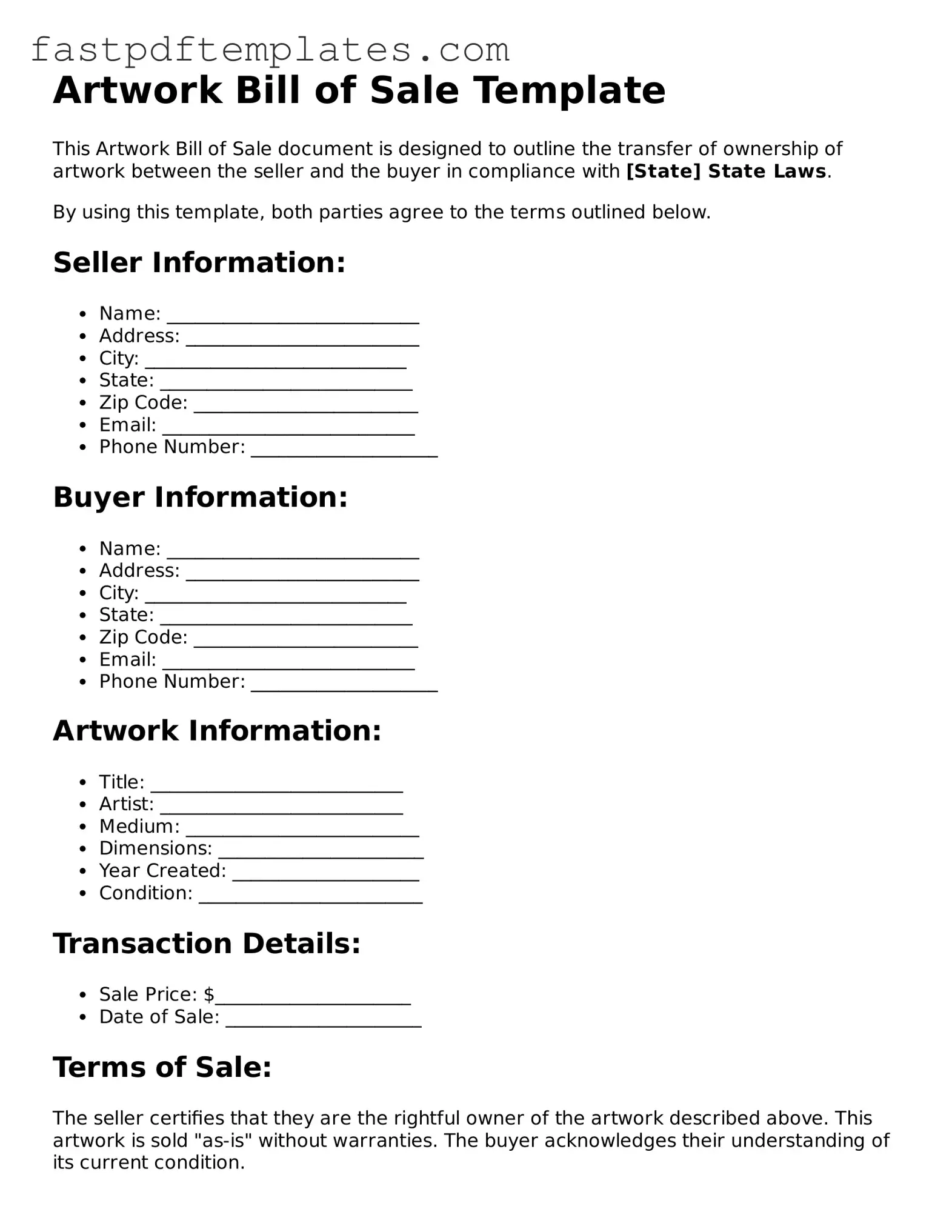The Artwork Bill of Sale form shares similarities with a Vehicle Bill of Sale. Both documents serve as proof of ownership transfer from the seller to the buyer. They typically include essential details such as the names and addresses of the parties involved, a description of the item being sold, and the sale price. Just as with artwork, a vehicle's bill of sale is often required for registration and title transfer, ensuring that both parties have clear documentation of the transaction.
Another document akin to the Artwork Bill of Sale is the Real Estate Purchase Agreement. This agreement outlines the terms under which property is sold, including the purchase price and any contingencies. Like the Artwork Bill of Sale, it formalizes the transfer of ownership and provides legal protection to both the buyer and seller. Both documents require signatures to validate the agreement and often involve additional disclosures about the item or property being sold.
The Personal Property Bill of Sale is also similar in function to the Artwork Bill of Sale. This document is used for the sale of tangible personal property, covering a wide range of items, from furniture to electronics. It serves as a legal record of the transaction, detailing the item’s description, sale price, and the parties involved. Just as with artwork, it is vital for establishing ownership and can be used to resolve disputes should they arise in the future.
In the realm of collectibles, the Collectible Bill of Sale bears resemblance to the Artwork Bill of Sale. This document is specifically tailored for items considered collectibles, such as coins, stamps, or vintage toys. It includes similar elements, such as the item’s description, sale price, and the identities of the buyer and seller. Both documents aim to provide clarity and security in transactions involving valuable items.
The Equipment Bill of Sale is another document that aligns closely with the Artwork Bill of Sale. This form is used when selling equipment, whether for personal or business use. It includes details like the equipment’s specifications, condition, and price. Just like in art transactions, having a formal bill of sale protects both parties and ensures that the transfer of ownership is documented properly.
The Business Asset Bill of Sale is similar in nature, particularly for transactions involving business assets such as machinery or inventory. This document outlines the specifics of the assets being sold, including their condition and valuation. Like the Artwork Bill of Sale, it serves to confirm the transfer of ownership and to provide legal backing for the transaction, helping both parties avoid future disputes.
The Furniture Bill of Sale is another comparable document, used specifically for the sale of furniture. It details the items included in the sale, their condition, and the agreed-upon price. Just as with artwork, having a bill of sale for furniture transactions offers both parties a sense of security and clarity regarding ownership and the terms of the sale.
The Intellectual Property Assignment Agreement also shares some characteristics with the Artwork Bill of Sale. This document is used to transfer ownership of intellectual property rights, such as trademarks or copyrights. It includes details about the rights being transferred and the compensation involved. Both documents formalize the transfer of ownership and provide a legal framework to protect the interests of both parties.
Finally, the Franchise Agreement can be seen as similar in its formal nature. While it primarily pertains to the sale of a business model and brand rather than a physical item, it outlines the terms of the relationship between the franchisor and franchisee. Both the Franchise Agreement and the Artwork Bill of Sale serve to clarify the rights and responsibilities of each party involved in the transaction, ensuring a clear understanding of the terms.
